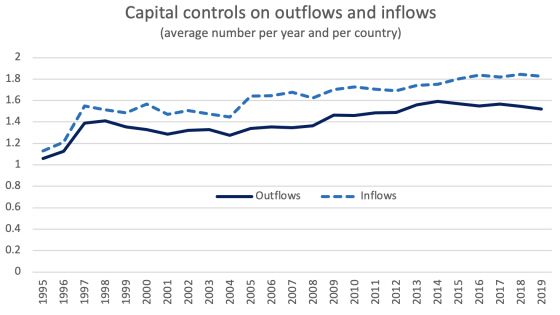DP89 Capital Controls and the Real Exchange Rate
Using an intertemporal, two-country general equilibrium model, I demonstrate that international asymmetries in expenditure patterns determine the real exchange rate effects of capital controls. Capital import taxes lower world interest rates but raise home interest rates. These changes in interest rates bring about a change in the composition of world expenditure, with a shift of home expenditure from the present ("today") to the future ("tomorrow") and a shift of foreign aggregate expenditure from tomorrow to today. If the pattern of expenditure across commodities is the same at home and abroad, the change in the composition of world expenditure has no effects on the (excess) demand for any particular commodity. Therefore, with identical expenditure patterns at home and abroad, the imposition of capital controls has no effect on the real exchange rate. However, when consumers have a preference for domestically produced goods, the shift in composition of world expenditure caused by interest rate changes implies a decline in demand today for home goods. In that case, capital controls lower the real exchange rate. Of course in period two the reverse happens. This result is mitigated when the country imposing capital controls is a large debtor.

